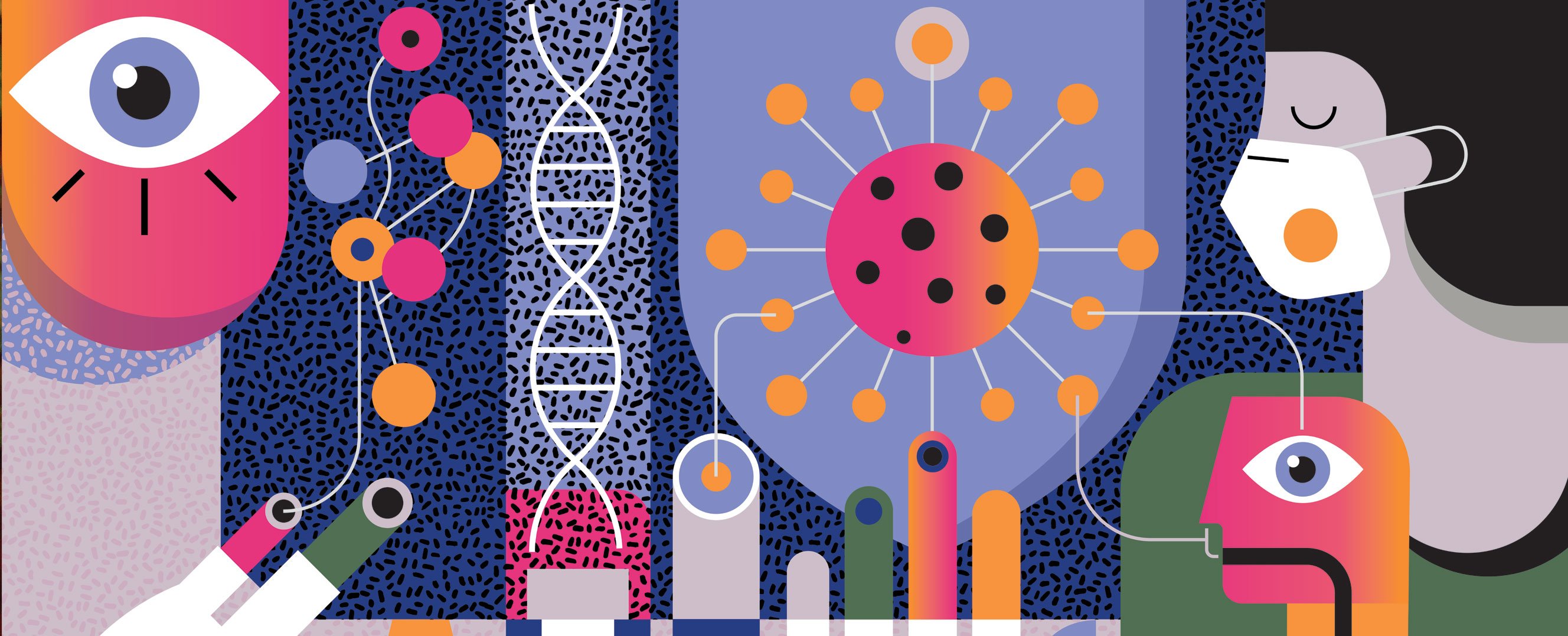Our approach to vaccine finance is ill-suited to addressing epidemic risk
The world faces a sustained threat of outbreaks and epidemics. In many locations, the COVID-19 pandemic continues to rage, while in others, any lapse in control could spark a swift resurgence. Beyond COVID-19, the potential emergence and spread of other known and unknown pathogens represent another less immediate, but no less material, element of risk.
Given the substantial health, economic, and social consequences of epidemics and the high cost of mounting a response, biopharmaceutical countermeasures to prevent or quickly react to emerging infectious diseases have tremendous value. A growing body of research supports the notion that the full societal value of vaccination far exceeds what traditional economic evaluations, which narrowly focus on a subset of direct health benefits and health care cost savings, can capture.
But reliance on population immunization to control infectious diseases requires substantial expenditure on research and development (R&D), manufacturing capacity, and delivery.
The adage that an ounce of prevention is worth a pound of cure has never been truer. Yet important questions remain: How do we make sure we are investing in the correct ounces? And how will we pay for these investments?
‘Panic and neglect’
The current system for developing and manufacturing vaccines, which relies substantially on the profit motive of major multinational pharmaceutical companies, has produced many vaccines for endemic diseases that affect large numbers of people in wealthy countries. Driven by the demand of those with high ability and willingness to pay or strong philanthropic backing, new vaccines against pneumococcal disease, human papillomavirus, rotavirus, and seasonal influenza have been brought to market in recent years, saving millions of lives in countries of all income levels while generating billions of dollars in annual profit. Likewise, effective COVID-19 vaccines are on track to be developed in record time, even if the rosiest prognostications of widespread availability in one to two years from the inception of R&D are far less certain.
However, the current model of vaccine R&D and manufacturing is significantly less effective for diseases that almost exclusively affect lower-income countries and for individually low-probability, high-severity epidemic threats, such as Ebola-like hemorrhagic fevers, Severe Acute Respiratory Syndrome (SARS), Middle East Respiratory Syndrome, Zika, and others included in the World Health Organization’s (WHO’s) list of blueprint priority diseases (WHO 2020). The world’s continued failure to produce high-quality vaccines against tuberculosis, malaria, and human immunodeficiency virus—the three biggest infectious disease killers globally—and the lengthy delays witnessed in finalizing an Ebola vaccine despite early promise emblematize the shortcomings of the system.
Loading component...
Many observers have described a cycle of “panic and neglect” when it comes to investing in preventive measures against diseases of epidemic potential. For example, the flurry of funding for R&D efforts aimed at producing a vaccine against coronaviruses that took place during and immediately after the 2002–04 SARS pandemic was followed by years of dramatically reduced activity when the immediate threat abated. In general, the global community spends much less on prevention than on treatment: With vaccine sales generating roughly $40 to $60 billion in annual revenue, the global vaccine market accounts for approximately 3–5 percent of the total global pharmaceutical market.
New international entities such as the Coalition for Epidemic Preparedness Innovations (CEPI) and established global health institutions such as Gavi, the Vaccine Alliance; the Bill & Melinda Gates Foundation; and the Wellcome Trust are attempting to address some of the world’s unmet need for (insufficiently profitable) vaccines. CEPI aims primarily to bolster vaccine R&D, while Gavi supports vaccine delivery (and manufacturing by virtue of increasing market demand), and the Gates Foundation and the Wellcome Trust provide needed funds to CEPI, Gavi, and others.
But despite the efforts of these players and despite the attention to global health security generated by COVID-19 and multiple recent Ebola epidemics, several prominent challenges remain. The world needs robust mechanisms to advance the development, manufacture, and distribution of safe, effective, and affordable vaccines against diseases of epidemic potential, especially those that threaten primarily poorer countries.
Challenges
Some of the biggest challenges in producing and delivering vaccines with unassured prospects for profitability include the high costs and long time horizons involved, substantial risk of R&D failure, potential constraints on demand, the inherent difficulties of collective financing, and issues of political economy.
Vaccine R&D and manufacturing are expensive. Estimates of total R&D costs range from roughly $200 million to $500 million per successful vaccine, inclusive of sunk costs for failures. Building and maintaining the unique manufacturing facilities required to produce new vaccines at scale could add another $500 million to $1.5 billion to the total (Plotkin and others 2017).
In addition to being expensive, vaccines typically take many years to develop, test, manufacture at scale, and distribute. It is not uncommon for more than a decade to elapse between the inception of initial research and the end of phase III clinical trials, which are typically the last step in the development process before registration for use in the general population.
Sometimes requirements for recommendation for inclusion in national immunization programs delay population access to needed vaccines even further. A 2013 study (Blank and others 2013) found that, on average, 6.4 years elapsed between marketing authorization for new vaccines and the time at which population access was achieved in European countries.
These long time horizons and high investment costs are accompanied by substantial risk of failure for any given candidate in development, and often by considerable risk of unprofitability even for successful vaccines against the types of diseases discussed above. In addition to the constraint of low ability to pay in important markets, a vaccine may end up not being profitable because of competition from other vaccine developers and potential substitutes in the form of effective antimicrobials and other biomedical countermeasures, such as monoclonal antibodies. For individual vaccines against diseases of epidemic potential, demand clearly depends on whether outbreaks occur, assuming no advanced stockpiling agreements have been arranged. In recent years, growing vaccine hesitancy has also threatened to suppress demand.
From an industry perspective, investing in a vaccine that meets these challenges is a daunting prospect. As demonstrated in the economics literature, private companies are inclined to delay investment in R&D projects with uncertain returns until the expected profits from the project exceed its cost plus the value of giving up the option to delay (Pindyck 1991). Consequently, when the value of a vaccine is particularly time sensitive—as is often the case for vaccines against emerging pathogens—governments or philanthropic organizations can speed development by providing guarantees that de-risk investment in successive stages of clinical trials and manufacturing capacity.
The challenge of motivating private investment in new vaccine development is compounded by the fact that the necessary expenditures carry substantial opportunity costs for big pharmaceutical companies. This is a result of the fact that existing market structures allow for these companies to earn patent-enabled excess profits by investing in their other product lines, such as treatments for chronic diseases.
The knowledge produced by vaccine R&D (including any formulas for new vaccines) is a global public good; in addition, immunization produces many positive externalities, including interruption of disease transmission, reduced rates of antimicrobial resistance, and potentially improved macroeconomic performance. Collective public financing of vaccine R&D and manufacturing capacity therefore represents an appealing alternative to private financing incentivized by patent-enabled profits. But this too presents difficulties. One important challenge is what is known in economics as the free rider problem: If the knowledge produced by vaccine R&D is openly available, then this will lower the incentive for individual countries to invest in its generation. Another major challenge has to do with the question of whether, relative to market forces, central decision-making represents an effective way to identify promising vaccine candidates.
Political realities also pose potential barriers to collective financing. Democratically elected officials may lack incentives to approve investment in projects such as vaccine platforms or reserved manufacturing capacity for epidemics that are unlikely to yield visible returns while they are in office. This disinclination may be heightened by a lack of public perception that epidemic threats are “real” when novel infectious diseases are not actively spreading. In many contexts, overall lack of trust in scientific and political authority also threatens to diminish public support for pandemic preparedness efforts, among other public health initiatives.
Loading component...
Also troubling is the rise of a phenomenon dubbed “vaccine nationalism” during the COVID-19 pandemic, in which some national authorities in high-income and upper-middle-income countries might have eschewed international cooperation in favor of betting on specific vaccine candidates over which they will have control should they prove to be successful. Vaccine nationalism threatens to prevent early doses of successful vaccines from going where they are most needed and would produce the greatest benefits.
Solutions
Fortunately, the world has several powerful tools at its disposal for addressing these challenges.
With respect to accelerating vaccine R&D and manufacturing, investment may be increased in cutting-edge vaccine platforms to accelerate development, such as the mRNA technology that some developers are currently using to produce COVID-19 vaccine candidates. Governments and international bodies such as the WHO can also work to formalize special regulatory pathways that allow for accelerated approval of vaccine candidates during epidemics, while ensuring that basic safety requirements are still met. To speed manufacturing, governments and international funders such as Gavi, the Gates Foundation, and the Wellcome Trust could contract with pharmaceutical companies for direct access to manufacturing facilities during emergencies.
An international body such as the WHO or a novel technical advisory council on infectious disease threats (Bloom and Cadarette 2019) could expand on the current blueprint list of priority pathogens to develop a global budget and action plan for financing relevant R&D and de-risking the manufacture of vaccines against those pathogens.
As for the collective financing of vaccines, more international cooperation is clearly needed. For example, consortia of wealthy countries, such as the Organisation for Economic Co-operation and Development, the Group of Seven, and the European Union, could agree to committing several years of earmarked funds for international organizations to finance the R&D, production, and purchase of vaccines against emerging pathogens. Increasing funding to CEPI, enlarging its pool of sponsors, and expanding its authority by sponsoring development of a greater number of vaccine candidates and supporting the vaccine developer organization into (and perhaps through) phase III trials is one possible concrete action along these lines.
Such collective efforts could improve the affordability of epidemic vaccines—and thereby facilitate access—for people in poor countries. Conditioning public grant funding of early R&D efforts on price ceilings or the possibility of compulsory licensing could serve a similar purpose.
Finally, with regard to political concerns, some policymakers may be persuaded by the argument that investing in vaccines and other preventive measures against diseases of epidemic potential amounts to a form of socially valuable insurance. Others may be persuaded that stockpiling vaccines against a potential epidemic is akin to having a standing army prepared to battle in a war yet unknown. Convincing the public of the value of these measures might help promote policymaker accountability.
Public intervention needed
Taken together, epidemic threats pose a huge risk to humanity and human progress. Vaccines represent one of the most valuable tools at our disposal for managing that risk.
Despite the high societal value of vaccination against diseases of epidemic potential, aspects of vaccine economics create challenges for achieving socially optimal levels of vaccine R&D, production, and uptake. Because vaccine R&D and the knowledge it creates are global public goods and because administered doses of vaccine have substantial positive externalities, the market tends to undersupply them. We therefore need public intervention to support R&D, manufacture, financing, and delivery—likely in the form of collective financing and the regulation of existing institutions.
COVID-19 is highlighting the fragility of our current systems for vaccine development, manufacture, and delivery. The world would do well to strengthen its systems before the next emerging pathogen gets a foothold in the human reservoir.
Opinions expressed in articles and other materials are those of the authors; they do not necessarily reflect IMF policy.
References:
Blank, Patricia R., Matthias Schwenkglenks, Christelle Saint Sardos, Julien Patris, and Thomas D. Szucs. 2013. “Population Access to New Vaccines in European Countries.” Vaccine 31 (27): 2862–67.
Bloom, David E., and Daniel Cadarette. 2019. “Infectious Disease Threats in the Twenty-First Century: Strengthening the Global Response.” Frontiers in Immunology 10:549.
Pindyck, Robert S. 1991. “Irreversibility, Uncertainty, and Investment.” Journal of Economic Literature 29 (3): 1110–48.
Plotkin, Stanley, James M. Robinson, Gerard Cunningham, Robyn Iqbal, and Shannon Larsen. 2017. “The Complexity and Cost of Vaccine Manufacturing—An Overview.” Vaccine 35 (33): 4064–71.
World Health Organization (WHO). 2020. “Prioritizing Diseases for Research and Development in Emergency Contexts.” Geneva.










